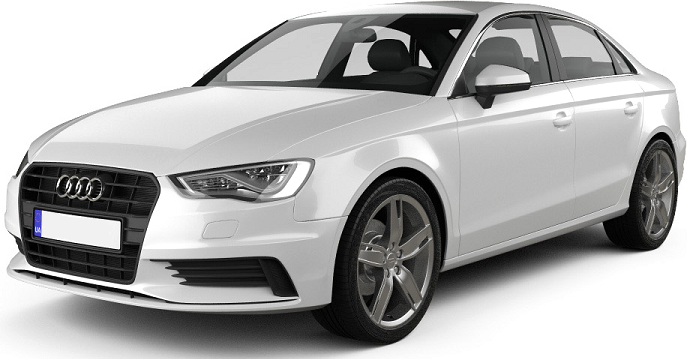The Risks of Using Non-OEM Parts in Your Vehicle

When it comes to maintaining and repairing your vehicle, the choice between Original Equipment Manufacturer (OEM) parts and non-OEM (aftermarket) parts can significantly impact your car’s performance, safety, and longevity. While non-OEM parts may seem like a cost-effective option, they come with a host of risks that can compromise your vehicle’s integrity and your safety on the road. Understanding these risks is crucial for any vehicle owner who wants to make informed decisions about their car maintenance. In this article, we will explore the various dangers associated with using non-OEM parts and why investing in genuine components to buy Audi supports online is essential for your vehicle’s well-being.
1.Inferior Quality
One of the most significant risks of using non-OEM parts is their generally inferior quality compared to genuine OEM components. Many aftermarket parts are manufactured with lower-grade materials to cut costs, which can lead to premature wear and failure. A study conducted by Consumer Reports highlighted that non-OEM parts often fit improperly and rust more quickly than their OEM counterparts. This inferior quality can have serious implications for vehicle performance and reliability.
When non-OEM parts are installed, they may not align perfectly with the vehicle’s existing systems, leading to installation issues that can compromise overall functionality. For example, a poorly fitted brake pad may not engage properly, resulting in decreased braking efficiency and increased stopping distances. Additionally, components that rust or degrade faster than OEM parts can lead to further damage within the vehicle, necessitating more frequent repairs and replacements.
Ultimately, the use of non-OEM parts can result in a cycle of ongoing maintenance issues, increased repair costs, and potentially hazardous driving conditions. Vehicle owners should carefully consider these risks when deciding whether to opt for cheaper aftermarket alternatives over genuine OEM components.
2. Safety Hazards
Safety is paramount when it comes to vehicle maintenance, and using non-OEM parts can pose serious safety risks. Substandard aftermarket components may not meet the necessary safety standards set by automotive manufacturers. For example, counterfeit brake pads may wear out unevenly or fail unexpectedly, leading to brake failure and increasing the risk of accidents. Components like airbags and seatbelts are critical for passenger safety; using non-genuine parts in these systems can compromise their effectiveness during a collision.
3. Poor Fit and Compatibility
Non-OEM parts are often designed as generic replacements rather than specifically engineered for your vehicle’s make and model. This can result in poor fitment issues that affect performance and functionality. For instance, improperly fitting body panels may not align correctly with crumple zones, compromising the vehicle’s structural integrity during an accident. Additionally, components that do not fit properly can lead to increased wear on other parts of the vehicle, resulting in costly repairs down the line.
4. Increased Repair Costs
While non-OEM parts may be cheaper upfront, they can lead to higher repair costs over time. The use of inferior components often results in more frequent breakdowns or failures, necessitating additional repairs or replacements. For example, if a non-OEM water pump fails prematurely, it could cause engine overheating and damage, leading to expensive engine repairs. Ultimately, choosing cheaper alternatives may end up costing you more in the long run.
5. Voiding Manufacturer Warranties
Using non-OEM parts can also void your vehicle’s warranty. Most manufacturers specify that repairs must be performed using genuine OEM components to maintain warranty coverage. If you opt for aftermarket parts that do not meet OEM standards, you risk losing warranty protection on your vehicle. This means that any future issues related to manufacturing defects may not be covered, leaving you responsible for all repair costs.
6. Compromised Resale Value
Investing in non-OEM parts can negatively impact your vehicle’s resale value. Potential buyers often look for well-maintained cars that have been serviced with genuine components. A history of using aftermarket parts may raise red flags for buyers who are concerned about quality and reliability. By choosing OEM parts during ownership, you enhance your vehicle’s appeal in the used car market and potentially secure a higher resale price.
7. Lack of Accountability
When you purchase OEM parts from authorized dealers or manufacturers, you gain access to warranties and customer support specific to those components. In contrast, many aftermarket suppliers do not offer the same level of accountability or support if issues arise with their products. If a non-OEM part fails shortly after installation, you may find it challenging to seek recourse or obtain replacements without proper backing from the manufacturer.
8. Environmental Concerns
The production of non-OEM parts often lacks the same environmental oversight as OEM manufacturing processes. Genuine manufacturers typically adhere to strict regulations regarding material sourcing and waste management, ensuring that their products are produced sustainably. In contrast, many aftermarket manufacturers may prioritize cost-cutting over environmental responsibility, leading to potentially harmful practices that could impact both the environment and public health.
9. Increased Risk of Counterfeit Parts
The rise of online shopping has made it easier for counterfeit automotive parts to enter the market. Many consumers unknowingly purchase fake components labeled as genuine or high-quality aftermarket alternatives. These counterfeit parts often do not meet safety standards and can pose significant risks when installed in vehicles. By choosing OEM parts from authorized dealers, you reduce the likelihood of encountering counterfeit products that could jeopardize your safety.
10. Legal Liabilities
Using non-OEM parts can expose you to legal liabilities if they lead to accidents or injuries. For instance, if an accident occurs due to a failed aftermarket component—such as a brake pad or suspension part—you might face liability claims if it is determined that substandard materials contributed to the failure. Additionally, dealerships or repair shops that use non-genuine parts may also face legal repercussions if customers suffer damages as a result.
In conclusion, while non-OEM parts may appear appealing due to their lower price tags, they come with significant risks that can compromise your vehicle’s performance, safety, and longevity. From inferior quality and safety hazards to increased repair costs and potential legal liabilities, the drawbacks far outweigh any short-term savings associated with using aftermarket components. To ensure optimal performance and protect your investment in your vehicle, always prioritize genuine OEM parts through an Audi spare parts trading company in UAE for repairs and replacements. By doing so, you enhance your car’s reliability while ensuring your safety on the road for years to come.



